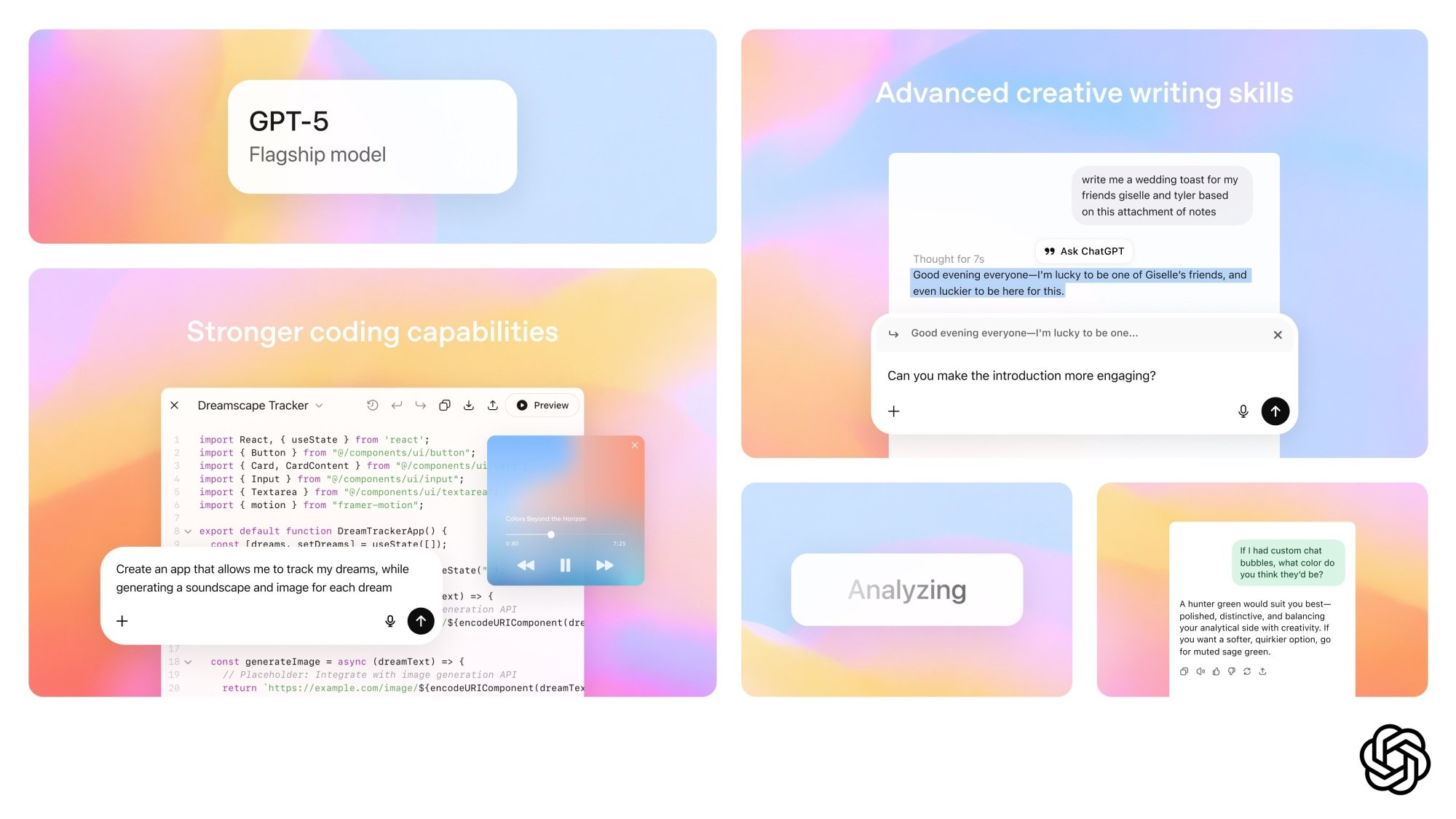At long last, GPT-5 has arrived — and it’s free to all ChatGPT users.
On Thursday, OpenAI launched what it describes as its smartest and fastest model yet during a livestream event. In a press briefing, OpenAI CEO Sam Altman detailed the foundation model’s capabilities. “GPT-3 sort of felt to me like talking to a high school student… GPT-4 felt like you’re kind of talking to a college student, GPT-5 is the first time that it really feels like talking to an expert in any topic,” said Altman, who compared it to a “PhD level expert.”
OpenAI says GPT-5 has improved expertise across coding, math, science, writing, and healthcare. Crucially, the company also claims the new large language model has a lower hallucination rate than o3, which was an unsettling 33 percent. But the key takeaway, Altman said, is overall improvements in both obvious and subtle ways. “I tried going back to GPT-4, and it was quite miserable,” he said.
GPT-5 will roll out today to ChatGPT free, Pro, and Plus users, but is not yet available as of this writing. OpenAI says free users will have the strictest rate limits, and ChatGPT will fall back to a more lightweight model called GPT-5 mini after users hit their limits. Pro users will get higher rate limits, and Plus users will have unlimited use and access to an even more powerful model called GPT-5 Pro. OpenAI also launched three model sizes for API users: GPT-5, GPT-5 mini, and GPT-5 nano.
Let the testing begin.
This is a developing story, and we’ll update this post as new information becomes available…
GPT-5 integrates OpenAI’s tools into one interface

Credit: OpenAI
GPT-5 also delivers a new user experience, combining multiple tools into one and expanding access to OpenAI’s more advanced AI tools.
Users fatigued by the confusing model picker will no longer need to manually select the right model for a task. GPT-5 does away with that and combines reasoning capabilities from previous models into one unified experience. Head of ChatGPT Nick Turley underscored that this is the first time free users will have access to reasoning, and “they don’t have to think about it, because GPT-5 just knows when to think.”
Mashable Light Speed
“The vibes of this model are really good, and I think that people are really going to feel that,” said Turley, “especially average people who haven’t been spending their time thinking about models.”
Speaking of vibes, OpenAI demoed a vibe-coding scenario where GPT-5 created a language-learning app with quizzes and games, all from a short natural language prompt. “[GPT-5] really puts the power of beautiful and effective coding in everyone’s hands,” said Yann Dubois, a GPT-5 researcher.

The OpenAI team demoed GPT-5’s vibe-coding abilities. Credit: OpenAI
GPT-5 arrives after years of anticipation and rumored setbacks. It’s been over two years since OpenAI launched GPT-4, the large language model that gave the already-popular ChatGPT a turbo boost in capabilities and fueled commercial adoption of AI models. But the GPT-5 launch has been repeatedly delayed amidst reports that the OpenAI team was struggling to achieve performance gains significant enough to warrant an entirely new model.
What GPT-5 means for the future of the AI industry
ChatGPT is currently the most well-known AI chatbot, with 700 million weekly active users, according to OpenAI. This means OpenAI has an outsized impact on the industry as a whole. Mashable is just beginning to test GPT-5, and we’ll have more to share on its features and capabilities in the days and weeks ahead.
For now, it’s too early to say if GPT-5 will silence AI critics, who say agentic AI tools have failed to meet expectations. Some AI experts also believe that scaling laws — improving AI models through sheer data and computing power — is hitting a wall, suggesting the current path to AGI is longer than what OpenAI claims, if it’s even possible.
But Altman said scaling laws “absolutely still hold” in the briefing. “We keep finding new dimensions to scale on, we can still scale the pre-training beautifully and get huge returns,” he said. “Obviously, we have to invest in compute at like an-eye watering rate to get that, but we intend to keep doing it.”
Meanwhile, a troubling new issue has emerged where users have experienced what’s described as “ChatGPT psychosis” and worsening existing mental health issues. A more advanced model raises questions about how users will relate to it and OpenAI’s responsibility to mitigate harmful interactions.
“We take these issues extremely seriously,” said Turley, who highlighted new features announced this week for healthier ChatGPT use. Turley said OpenAI has been collaborating with mental health experts, making improvements on issues like emotional reliance and ChatGPT sycophancy, and will have “a lot more to share soon.”
UPDATE: Aug. 7, 2025, 2:00 p.m. EDT This article has been updated with additional information about the new GPT-5 models from OpenAI.
Disclosure: Ziff Davis, Mashable’s parent company, in April filed a lawsuit against OpenAI, alleging it infringed Ziff Davis copyrights in training and operating its AI systems.
